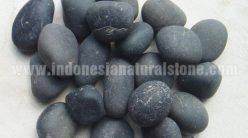flavorandfortune.com
by Wonona W. Chang
Food: Unusual Ingredients
Rocky was a very charming and friendly waiter. He loved to socialize with his customers. When he found out that I grew up in Sumatra, Indonesia, he said that I was his good neighbor because he came from Malaysia. Since that time he gives the best service whenever we go to the restaurant he works in.
One day Rocky told me that he was going home for a visit and that he could pay for his trip by bringing back bird’s nests to sell here. That was the first time I learned how expensive bird’s nests really are.
There are different grades of bird’s nests and the most expensive one is the red nest because that nest is the first nest the swiflet swallow makes. When this bird builds its nest, the regurgitate which is the adhesive of the nest has a few specks of blood mixed in it, therefore the name. All nests have debris, twigs and feathers in them, the poorest quality have the most feathers and are gray in color. They can demand only the lowest prices because it is most difficult to clean and refine them.
According to Chinese history, the famous eunich and navigator of the Ming Dynasty, Zheng Ho, in 1430 A.D. was sent by the emperor to develop trade routes to the south sea. Subsequently, he made seven trips and visited the Philippines, Malaysia, Burma, Thailand, Indonesia, and India. That was 62 years before Columbus sailed to America. Zheng Ho brought back many fruits and products that China had never seen before. One of the most exotic and rare was bird’s nests.
Bird’s nest is derived from the nest of the swiflet swallows that nest in the high precipitous cliffs and caves along the sea shores of many of the south sea countries. In China some of the bird’s nests come from the Guangdung and Fujian provinces.
People often risk their lives to climb high cliffs and fetch these nests since they are worth their weight in precious metals. In some places, people train monkeys to scamper up the cliffs to fetch the nests. However, even after they are gathered, they still have to be cleaned and refined before they can demand lofty prices. In the old days, to pay tribute to or to curry favor with those in the Chinese Imperial courts, merchants often include refined bird’s nests as gifts.
Analyses of the refined bird’s nest reveal that it is rich in protein, calcium and phosphorus. Chinese people claim that it is a tonic that improves a woman’s complexion and that it rejuvenates the spirit of the elderly. Bird’s nest, they say, also helps to balance ones Yin and Yang. It is considered to be better than any fancy medication so many people are willing to pay up to $250 per ounce or more for it in America.
Hong Kong is a consumer’s paradise. Whatever you want you can get provided you are willing to pay the price. Knowing that, I called my good friend Eva Lee who lives there and asked her for information about cost and other details about bird’s nest. She advised me to forget about writing such a recipe on bird’s nest, because she said that its cost, even in Hong Kong, is sky high. She felt it was impractical to write about it.
She had found that bird nests at wholesale prices cost $116 to $135 per ounce and so to prepare one bird’s nest dish would cost over $70 per person. A grand feast for twelve with bird’s nest as one of the dishes would cost $2,600 to $4,000 for the table.
Nowadays, even in Hong Kong you seldom hear of people ordering such a fancy feast. In America, if a restaurant would prepare a feast with bird’s nest for less, chances are they would either be serving pseudo bird’s nest or else the amount of bird’s nest in the dish or soup would be minuscule.
It has been a long time since I had bird’s nest soup at home. But it seems like it was just yesterday that I was in Sumatra and saw Ah Mah sitting on a stool patiently picking feathers out of a bird’s nest with a pair of tweezers.
Here is how bird’s nests are refined. First it is soaked in luke-warm water to let it swell, expand, and soften for two to three hours. Most of the debris and twigs can be easily removed at that time, but the small feathers are tenacious and still intermingle with the regurgitate. Next a few drops of oil are added to the water which preferentially adheres to the feathers thereby floating them to the surface of the water for removal. Often a few feathers still remain, so the water has to be changed many times before the bird’s nests are ready for consumption.
Bird’s nest can be prepared sweet or salty. In the sweet style, it can be prepared with rock sugar as a sweet nectar or with fragrant rice and steamed to a congee. In the salty style, it can be prepared as a soup with an herb such as ginseng, stuffed in pigeons or Cornish hens and steamed in a chicken soup or as a savory soup, as presented below. Here are two of my family’s favorite recipes. Note that because we know of no accurate nutrient analysis of bird’s nest, none is provided for these recipes.
Wonona Chang is one of Flavor and Fortune’s Test Kitchen directors, and along with her husband Irving and others, author of many Chinese cookbooks.





